Calculus BC
1/116
There's no tags or description
Looks like no tags are added yet.
Name | Mastery | Learn | Test | Matching | Spaced |
|---|
No study sessions yet.
117 Terms
Unit 1
Limits
Limit exists if
the left and right hand side limits are equal
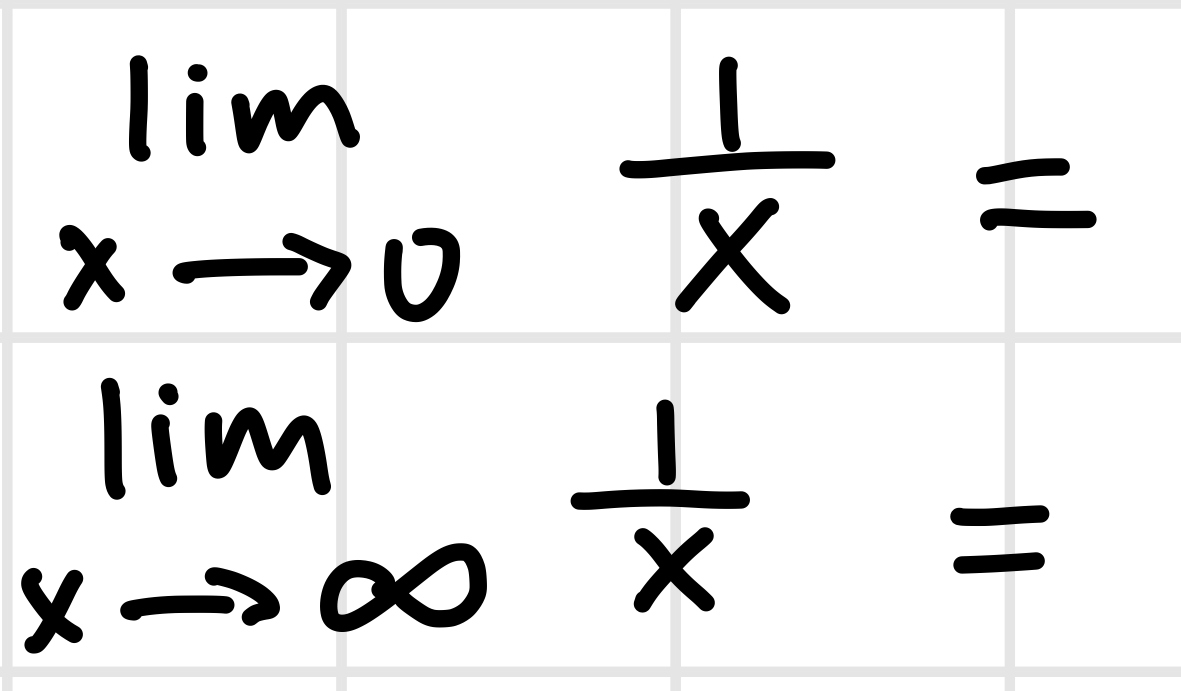
*
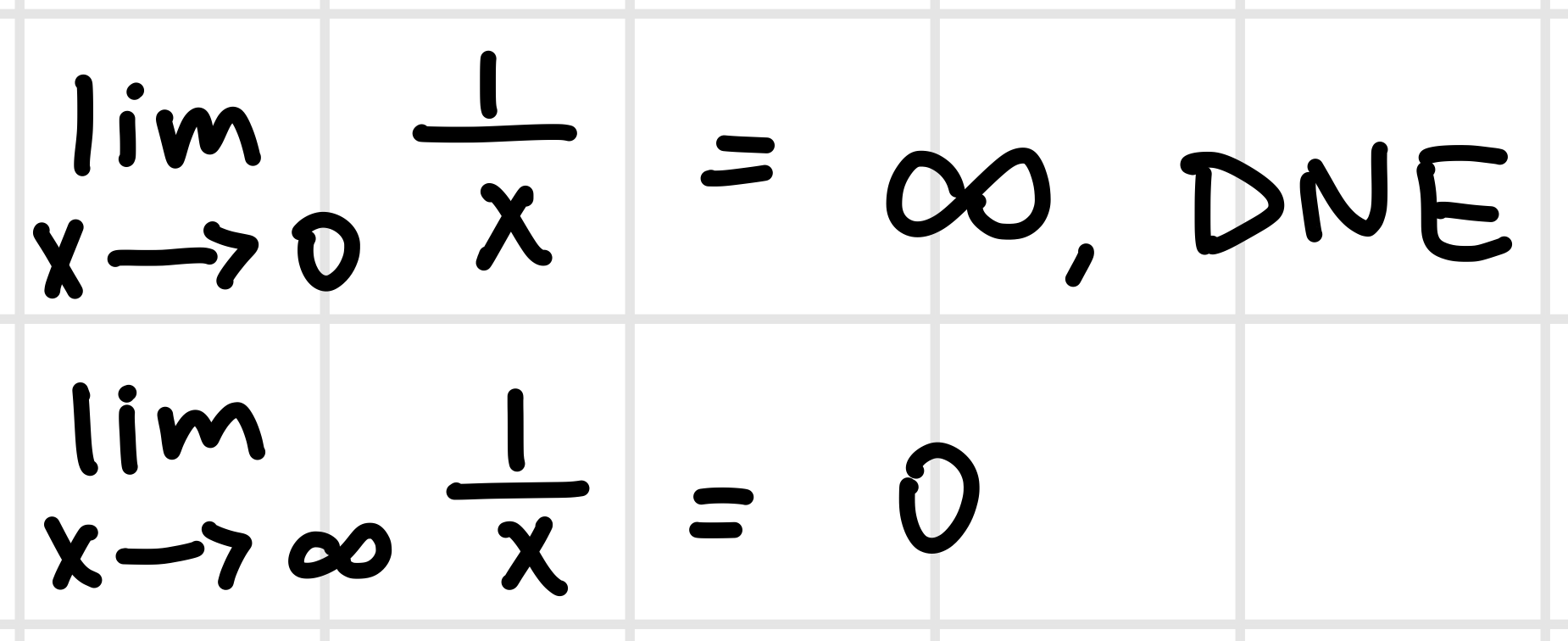
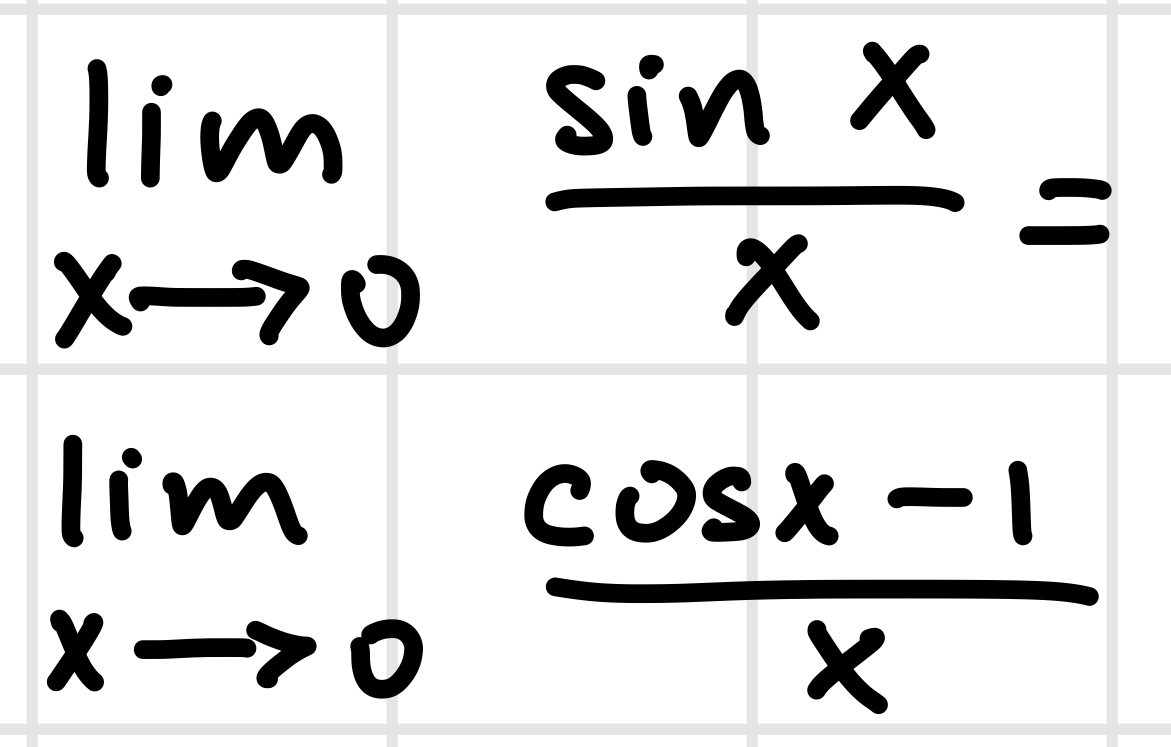
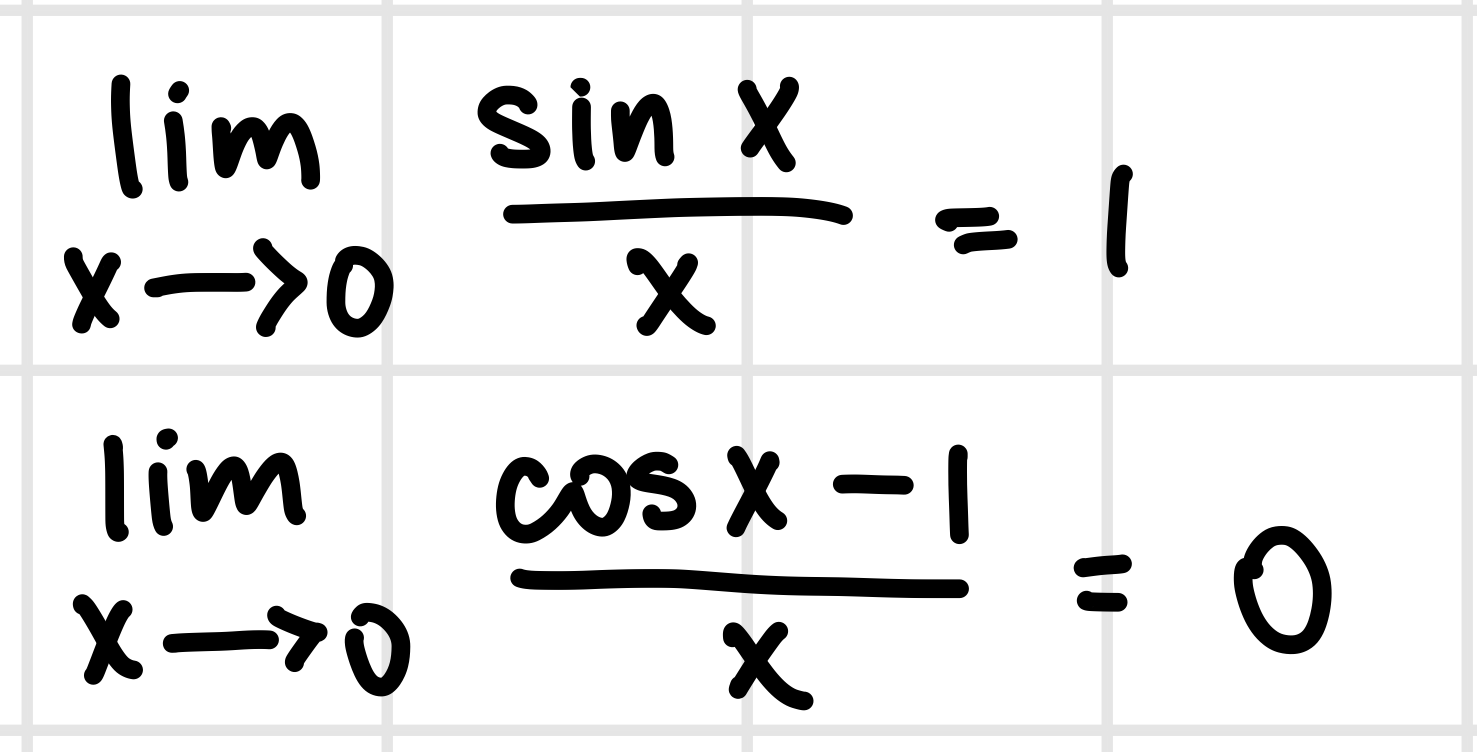
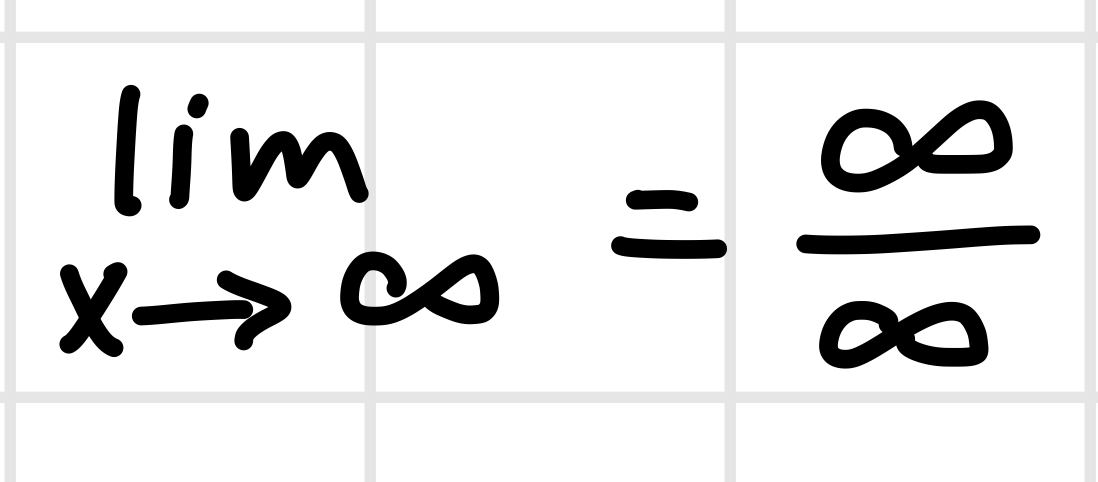
Horizontal Asymptote Rules*
Compare degrees of numerator and denominator
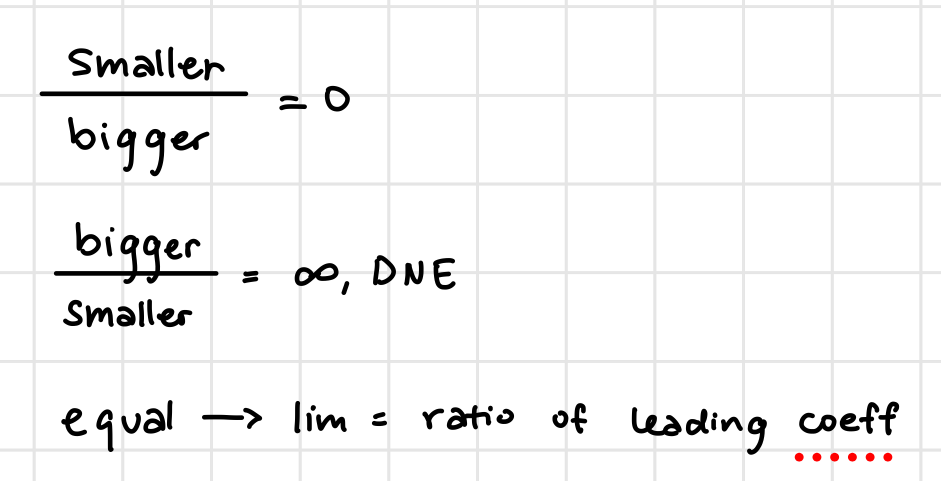
Three Types of Discontinuities*

Intermediate Value Theorem
If a function is continuous on closed interval [a, b], and takes on values f(a) and f(b), then it takes on every value between f(a) and f(b) at least once.
Squeeze Theorem
if g(x) <= f(x) <= h(x), and the limits of g(x) and h(x) as x approaches a particular value are equal, then the limit of f(x) as x approaches that value is also equal.
Unit 2
Differentiation
Average Rate of Change (AROC)
The slope of the secant line between two points on a graph
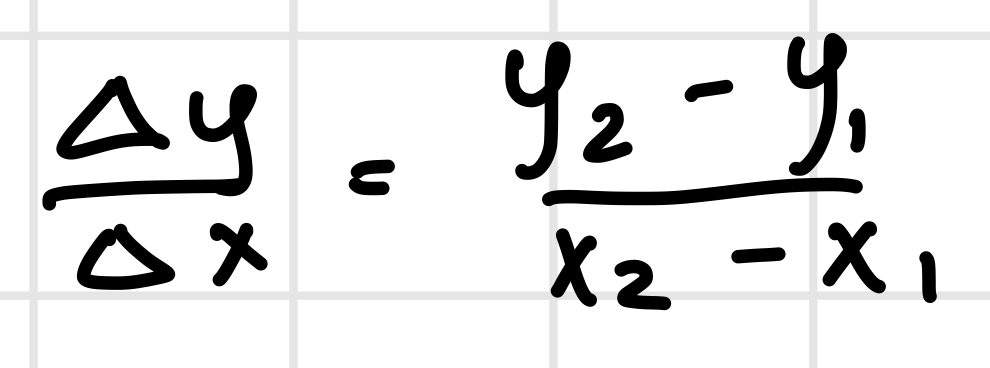
Instantaneous Rate of Change (ROC)
Slope of the tangent, lim of the secant line as the interval approaches zero.
Derivative Principle Formula

Constant Rule
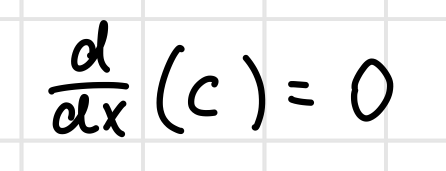
Constant Multiple Rule

Power Rule

Product Rule

Quotient Rule

(sinx)’ =
cosx
(cosx)’ =
-sinx
(tanx)’ =
sec² x
(e^x)’ =
e^x
(lnx)’ =
1/x
(a^x)’ =
a^x ln(a)

1/(xlna)
Unit 3
Composite, Implicit & Inverse Functions
Chain Rule

Implicit Differentiation - When x and y are mixed together and you can’t solve for y easily
Differentiate in terms of x
When you differentiate a term with y, multiply it by dy/dx
Collect all the terms involving dy/dx
Factor and solve for dy/dx

Inverse Functions Derivative


Inverse Trig Functions
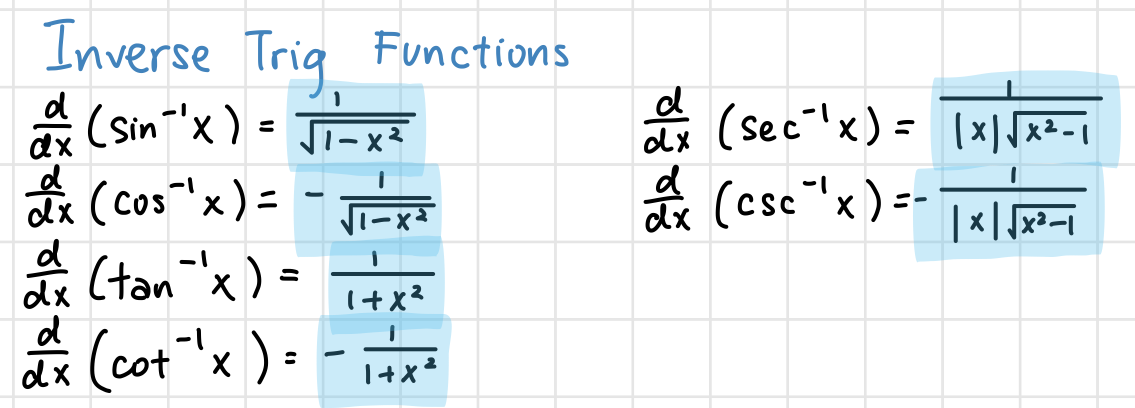
Unit 4
Applications of Differentiation
Position, Velocity, Speed & Acceleration
Position = s(t)
Velocity = s’(t)
Speed = |s’(t)|
Acceleration = s’’(t)
Solving for Related Rates
Identify variables and rates
Write an equation relating variables
Differentiate both sides with respect to t
Plug in known values and solve
Helpful formulas:
Sphere Volume = 4/3pi*r³
Sphere SA = 4pi*r²
Cone Volume = 1/3pi*r²h
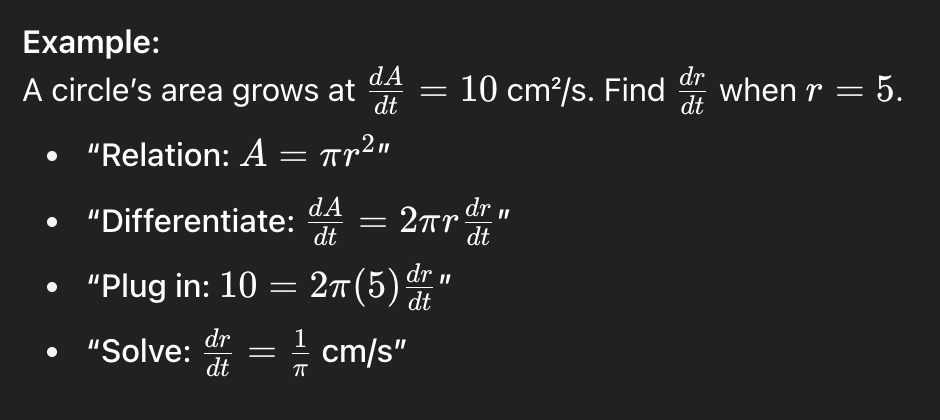
Linear Approximation Equation
The Linear Approximation Equation is used to estimate the value of a function near a given point by using the tangent line at that point x = a
(y-ycoord) = slope (x - xcoord)

Tangent Line Equation
The Tangent Line Equation is the equation of the line that touches a curve at a given point
y - f(a) = f'(a)(x - a)
where f(a) is the function value at x = a and f'(a) is the derivative at that point.
L’Hospital’s Rule*
Used if limit is in indeterminate form (0/0 or infinity/infinity)

Unit 5
Analytic Application of Derivatives
Mean Value Theorem (MVT)
Usef if f(x) is differentiable on open interval (a,b) and continuous on closed interval [a,b]
There exists at least one point c in (a,b) where the tangent line to the curve is parallel to the secant line connecting the endpoints of the interval (AROC = ROC)
![<p>Usef if f(x) is differentiable on open interval (a,b) and continuous on closed interval [a,b]</p><p>There exists at least one point c in (a,b) <span>where the tangent line to the curve is parallel to the secant line connecting the endpoints of the interval </span>(AROC = ROC) </p>](https://knowt-user-attachments.s3.amazonaws.com/d8c99193-ced2-473f-8a8f-6bac2acd6976.png)
Extreme Value Theorem (EVT)
States that if a function is continuous on a closed interval [a,b], then it has both a maximum and minimum value on that interval.
Local/Relative Extrema - How to tell if its max or min?
if f’(x) changes from positive to negative —> local max
if f’(x) changes from negative to positive —> local min
Absolute Extrema - How to find?
Critical Points
How to determine concavity
Point of Inflection
Unit 6
Integration
Riemann Sum/Approximation
Trapezoid Sum/Approximation*

Definite Integral

Integration Rules**
Fundamental Theorem of Calculus (Part 1)
Fundamental Theorem of Calculus (Part 2)
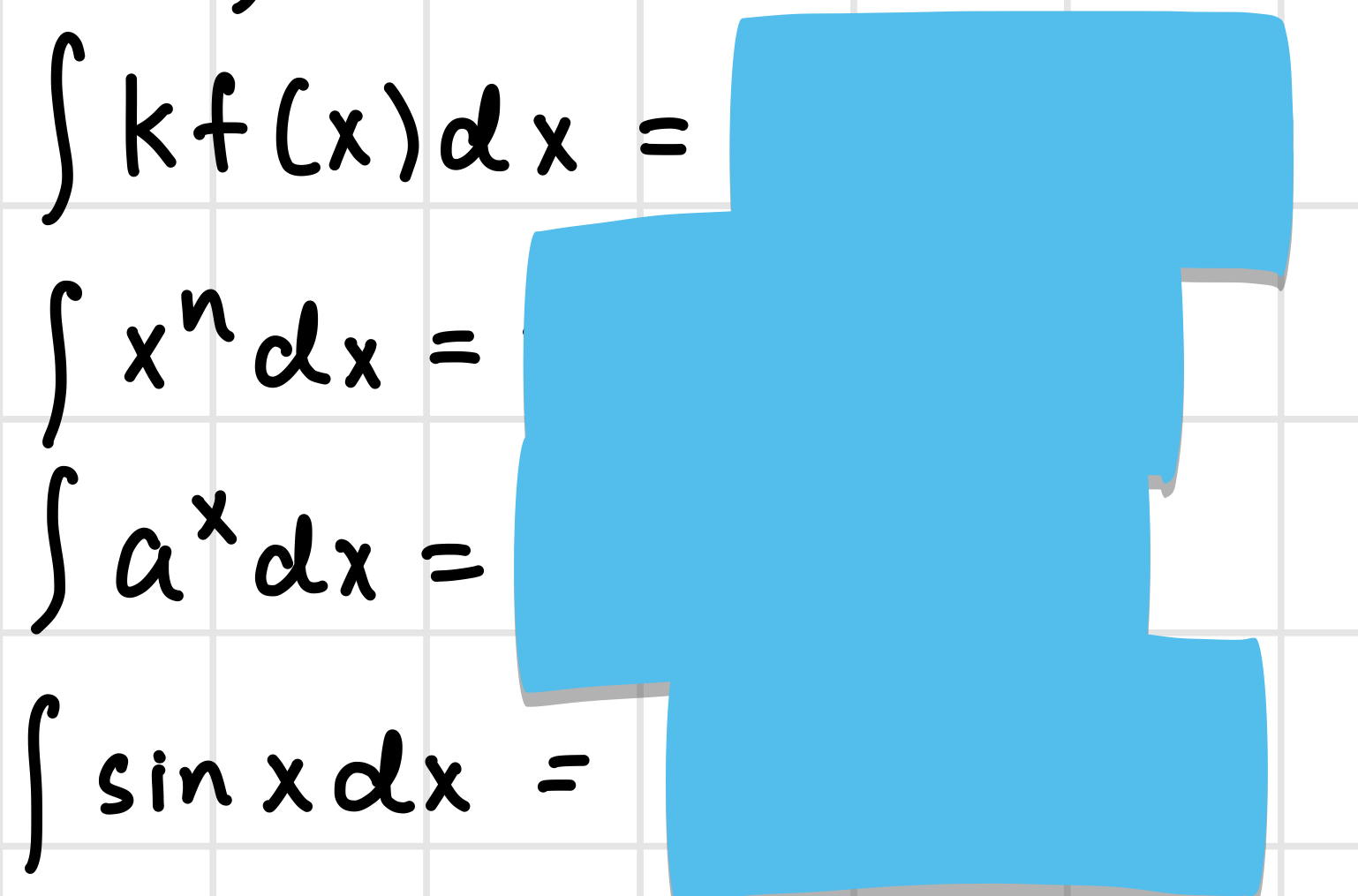
Integration Rules

Integration Rules
U-sub*
Substitute u
Find du/dx to find dx
Change bounds to u-values
Substitude dx into equation and keep u and du
Integrate and solve normally

Long Division
Completeing the Square
Linear Partial Fractions*

Integration by Parts

Picking order for Integration by Parts

Improper Integrals - what happens to integral when limit exists vs limit DNE
Unit 7
Differential Equations
Slope Fields
Euler’s Method*

Solving Differential Equations
Exponential Growth/Decay Model: dy/dt = ky
Logistic Growth Model
dP/dt = kP(1-P/L)
represents the rate of change of a population P over time, where k is the growth rate and L is the carrying/environmental capacity.
y = L/2 —> point of inflection/maximum
Unit 8
Applications of Integration
Average Value*
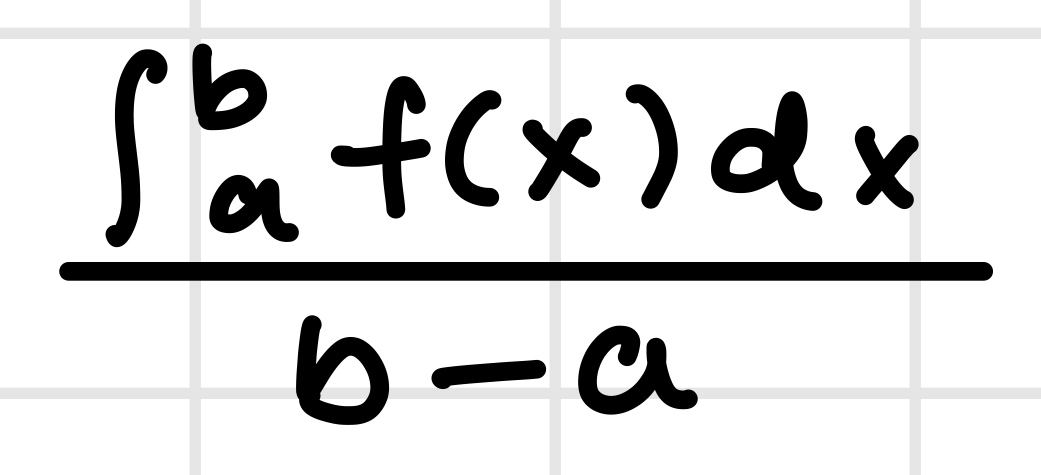
Kinematics: Displacement, Position, and Velocity
Net Change Theorem
Area Between Curves
Finding Volume - Formula
Disk Method (No Hole)
Washer Method (with Hole)
Unit 9
Parametric Equations, Vector Values Functions, Polar Coordinates
Parametric Equation* dy/dx =
(dy/dt) / (dx/dt)
Parametric Equation: dy/dt =
(dy/dx)(dx/dt)
Parametric Equation - 2nd derivative

Speed
Distance
Polar Coordinates: x =, y =
Polar Coordinates: dy/dx =
Area in Polar Coordinates
Area between Polar Curves
Unit 10
Series
How many series tests are there? What are they?
nth Term Test
Geometric Series*
A series where each term after the first is found by multiplying the previous term by a fixed, non-zero number called the common ratio. The sum can converge to a finite value if the absolute value of the ratio is less than one.

p-series
Harmonic Series
Integral Test
Limit Comparison Test
Direct Comparison Test
Alternating Series Test
Ratio Test*
A convergence test used to determine the absolute convergence of a series by examining the limit of the ratio of successive terms. If the limit is less than one, the series converges; if greater than one, it diverges.

Absolute Convergence
Alternating Series Error Bound
Taylor Series
Maclaurin Series
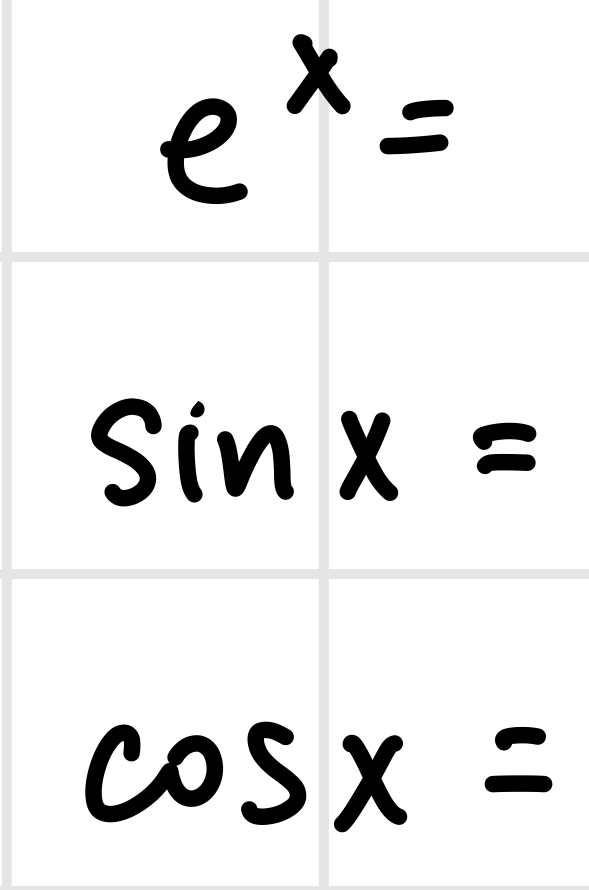
Lagrange Error Bound